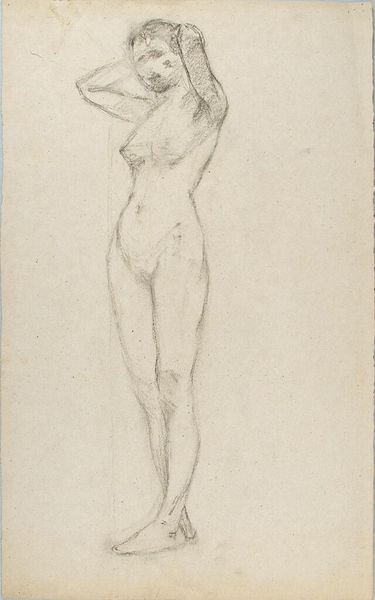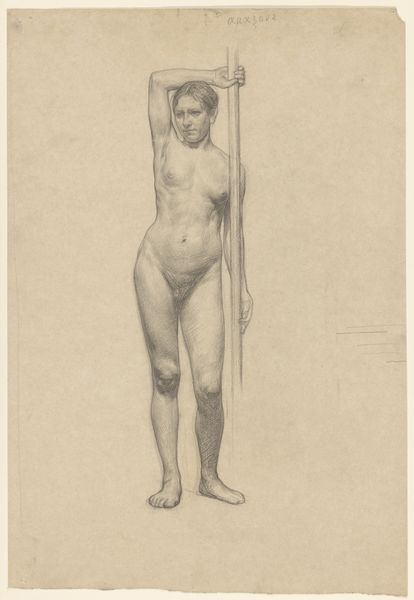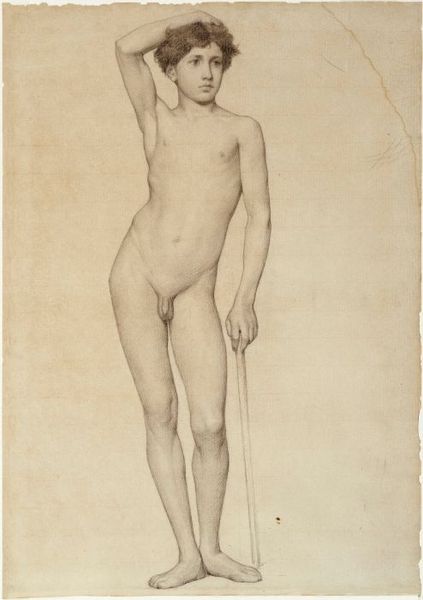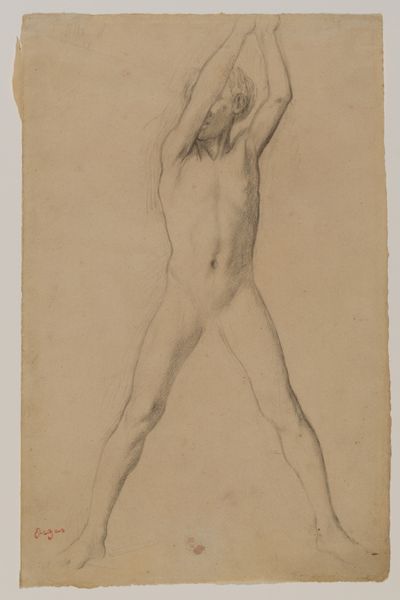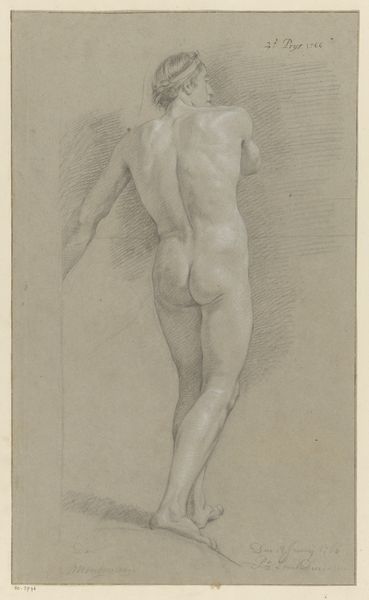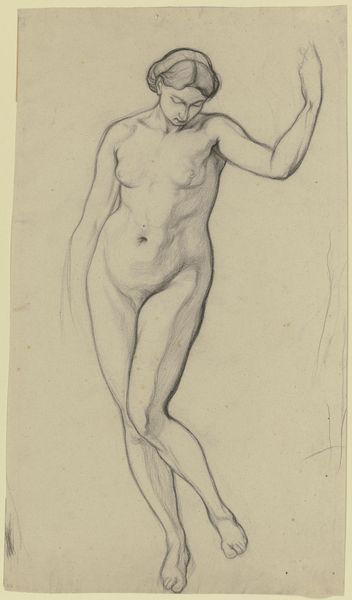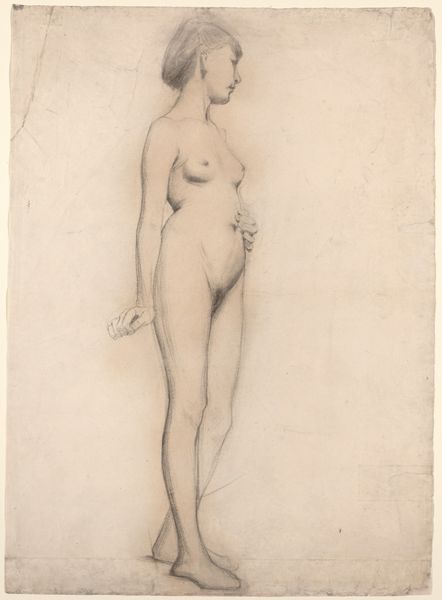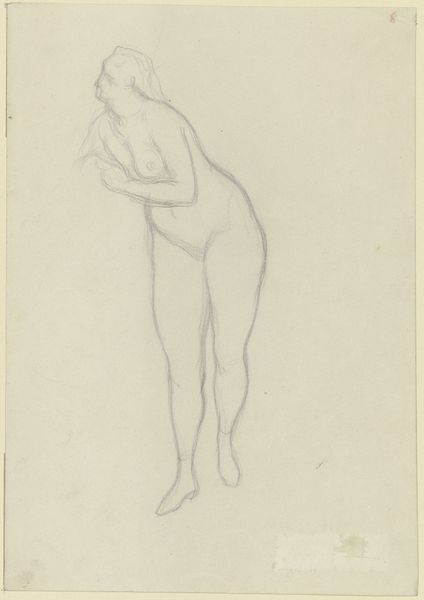
Study for Joan of Arc, and Sketches of Hands c. 1851
0:00
0:00
drawing, print, paper, pencil, graphite
#
portrait
#
drawing
# print
#
pencil sketch
#
study drawing
#
paper
#
pencil
#
france
#
graphite
#
sketchbook drawing
#
history-painting
#
academic-art
Dimensions: 447 × 291 mm
Copyright: Public Domain
Curator: Here we have Jean-Auguste-Dominique Ingres' preparatory drawing, "Study for Joan of Arc, and Sketches of Hands," circa 1851. It’s rendered in pencil on paper. Editor: There’s a vulnerability here. Despite the heroic subject, it’s a very intimate, almost fragile portrayal. I see a woman caught in a moment of reflection rather than the confident military leader. Curator: Ingres’ emphasis is less on narrative and more on the idealization of form, isn’t it? Notice the precise contours, the calculated anatomy. This reflects the academic tradition that Ingres championed, rooted in the pursuit of ideal beauty and classical forms. The texture in this work also creates subtle transitions and gentle gradation through the pencil and graphite marks. Editor: Precisely, but how can we detach Joan from her historical context? Ingres creates an image, rooted in the female form as an ideological statement, reinforcing the concept that the “woman” is somehow to bear the burdens for her actions when this idea of an almost spiritual warfare was socially agreed upon, not born from the female gender. Curator: Her gaze is averted and the additional studies of hands feel divorced from direct action or emotion. It highlights how his process emphasized breaking down the image and its components, divorced from an accurate historical depiction of the sitter as a symbol. Editor: Right. It suggests the internal struggles within the artist himself, questioning heroism while constrained to academic ideals and patriarchal limitations of what heroism truly is. In addition to representing women’s stories, there is a necessity to recontextualize the narrative to reflect their experiences. Curator: Well, either way, the mastery is undeniable. It is precisely how he manipulated form and the tradition he built that established him as one of the key figures in the canon of academic history. Editor: And Ingres offers us more than just classical ideals, but the opportunity to recontextualize and deconstruct his influence and expand our ideas about who he may have truly wanted us to focus on when viewing his works.
Comments
No comments
Be the first to comment and join the conversation on the ultimate creative platform.

